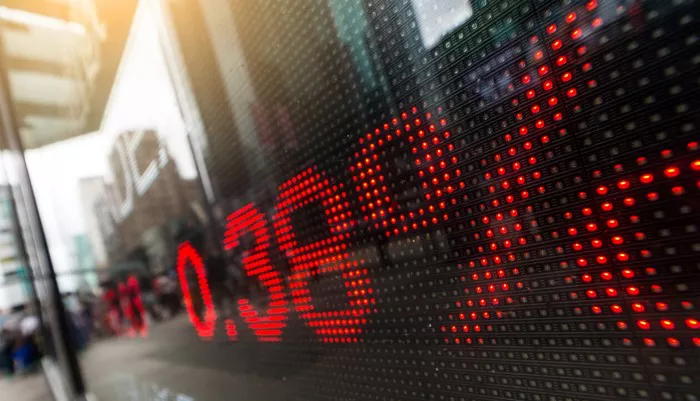Futures trading has long been a popular investment option for both seasoned traders and those looking to diversify their portfolios. With its user-friendly interface and commission-free trading, Robinhood has emerged as a platform of choice for many investors.
Understanding Futures
Futures are financial contracts that obligate the parties involved to buy or sell an underlying asset at a predetermined price on a specific future date. These contracts can be based on a wide range of assets, including commodities like gold and oil, stock market indices like the S&P 500, and even cryptocurrencies. The appeal of futures trading lies in its potential for profit from both rising and falling markets, making it a versatile tool for traders.
Getting Started with Robinhood
To start trading futures on Robinhood, you need to ensure you have a Robinhood account that is eligible for futures trading. Here’s how to begin:
Account Eligibility: First, make sure your Robinhood account is eligible for futures trading. This typically involves verifying your identity and meeting specific financial requirements set by Robinhood.
Request Access: After verifying your eligibility, request access to futures trading within the Robinhood app or website.
Wait for Approval: Robinhood will review your request and grant you access to futures trading once approved.
Deposit Funds: Before you can trade futures, you’ll need to deposit funds into your Robinhood account. The minimum account balance required for futures trading is typically higher than that for regular trading.
Navigating the Robinhood Futures Interface
Once you have access to futures trading on Robinhood, it’s crucial to familiarize yourself with the platform’s features and interface. Here’s a breakdown of the key components:
Watchlists: You can create and customize watchlists to monitor various futures contracts. This allows you to keep a close eye on your preferred assets.
Order Types: Robinhood offers different order types, including market orders, limit orders, and stop orders. Understanding when and how to use these orders is essential for executing trades effectively.
Margin Trading: Futures trading often involves leverage, which can amplify both profits and losses. Make sure you understand the margin requirements and the risks involved in leveraged trading.
Charts and Technical Analysis: Robinhood provides charting tools and technical analysis features to help you make informed trading decisions. Learning how to read charts and interpret technical indicators can enhance your trading strategies.
Real-Time Data: Access to real-time data is crucial in futures trading. Robinhood provides real-time market data, including price quotes, volume, and market depth, which can aid in making timely decisions.
Research and Analysis: Robinhood offers educational resources, news, and analysis to help you stay informed about the latest developments in the futures market. These tools can be valuable in your trading journey.
Executing Your First Futures Trade
Once you are comfortable with the Robinhood Futures interface, you can execute your first trade. Here’s a step-by-step guide:
Choose a Futures Contract: Select the futures contract you want to trade. You can browse available contracts and review their details, including expiration date, tick size, and margin requirements.
Set Your Trade Parameters: Determine your entry and exit points by specifying the contract, quantity, order type, and price. Consider your risk tolerance and trading strategy when setting these parameters.
Place the Trade: After confirming your trade details, place the order. Robinhood will execute the trade when the market conditions meet your specified criteria.
Managing Risk in Futures Trading
Managing risk is a crucial aspect of futures trading, as it can be highly volatile and leveraged. Here are some risk management strategies to consider:
Stop-Loss Orders: Implement stop-loss orders to limit potential losses. These orders automatically sell your futures contracts when the market reaches a specified price, helping you control risk.
Diversification: Avoid concentrating all your capital in a single futures contract. Diversify your portfolio by trading a variety of contracts to spread risk.
Risk Capital: Only use funds that you can afford to lose for futures trading. Avoid trading with money that you need for essential expenses.
Risk-Reward Ratio: Determine a risk-reward ratio for your trades. This ratio helps you assess the potential profit relative to the risk taken for each trade.
Stay Informed: Continuously monitor the market, news, and events that may impact your futures contracts. Being informed about market developments can help you make timely decisions.
Practice with Paper Trading: Robinhood offers a paper trading feature that allows you to practice trading without risking real capital. Use this feature to test your strategies and build confidence.
Advanced Strategies and Tools
As you gain experience in futures trading on Robinhood, you may want to explore more advanced strategies and tools. Some of these include:
Options on Futures: Robinhood also offers options on futures, which can be used to hedge positions or create more complex trading strategies.
Fundamental Analysis: In addition to technical analysis, consider incorporating fundamental analysis into your trading decisions. This involves assessing the underlying factors that may influence the futures market.
Algorithmic Trading: Develop or use algorithmic trading strategies to automate your trading and execute orders based on predefined criteria.
Risk Parity: Implement risk parity strategies to allocate your portfolio’s risk more evenly across different asset classes.
Conclusion
Futures trading on Robinhood is a versatile and accessible way to diversify your investment portfolio. With the right knowledge and strategies, you can navigate the world of futures and potentially profit from both rising and falling markets. However, it’s important to approach futures trading with caution, as it involves risk and leverage. As you embark on your futures trading journey, remember to stay informed, practice responsible risk management, and continually educate yourself on the intricacies of this market. .


